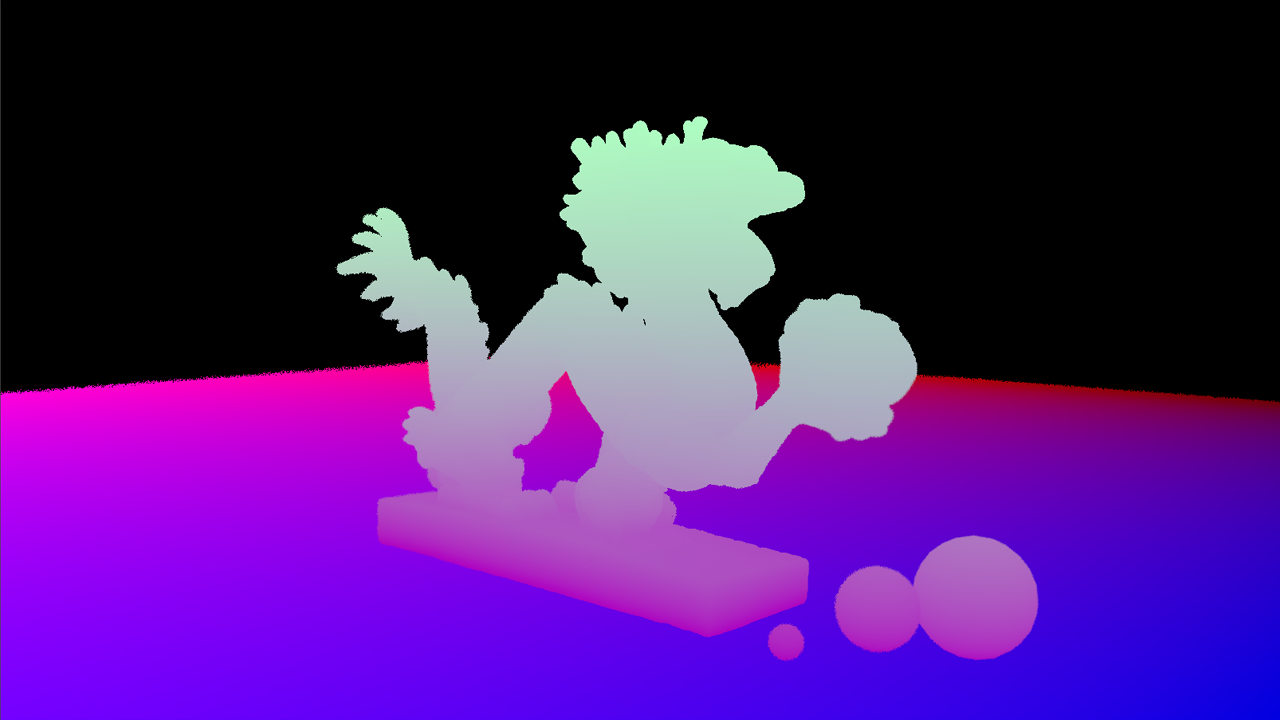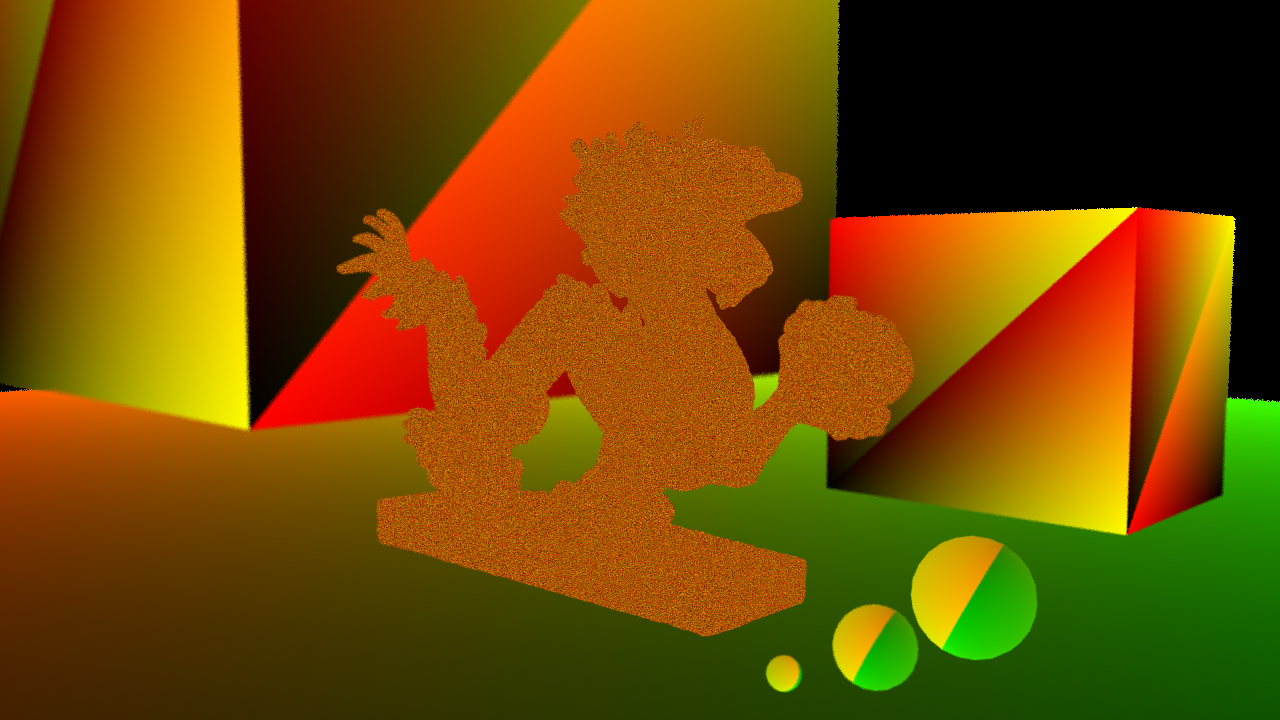Standard Buffers
| Buffer | LDR (or Image Viewer) | HDR |
|---|---|---|
Final Render Final output from F9 or F10. For some of the other buffers we have changed the material for the dragon or beads. | ||
Alpha | ||
Backdrop The backdrop image, color or gradient for the scene | ||
Camera Tangent Space XYZ The surface normals relative to the camera | ||
Depth | ||
Edges A buffer containing just rendered edges. Shown here Intersection edges for the dragon and Silhouette edges for the spheres (with Other Edges for the green Sphere) | ||
Geometry xxx | ||
Lens Flare A buffer containing just the lens flare element from the render | ||
| Motion The Motion Vector Buffer outputs a color channel that shows object movement within the scene. This Buffer can be used by post-processing software to calculate a 2D motion blur effect. The advantage is that it is usually quicker to render compared to true 3D motion blur, but there are limitations for things like camera motion and transparency. | ||
Normals The surface normals in world space | ||
Object ID | ||
Object Position The position of each scene object in Local Space. This buffer records X, Y and Z information rather than color. | ||
| Surface ID Surfaces are given different colors to separate them. For an HDR image output this will look only like white in the Image Viewer, but there are different Red, Green and Blue levels to indicate discrete surfaces | ||
Texture Position It appears differently in VPR (left) than Image Viewer (right) because with VPR values are multiplied to fall between 0-255, whereas Image Viewer can have negative values | ||
Transparency Shows areas that are transparent to other objects or the background. See also Refraction | ||
UV To demonstrate this we have added two cubes with their own UV maps to the Ground plane object in the scene. The Ground Plane itself is set as the default UV and the three spheres are discrete objects so have default UVs each. | ||
| World Position This buffer records X, Y and Z information rather than color. It appears differently in VPR (left) than Image Viewer (right) because with VPR values are multiplied to fall between 0-255, whereas Image Viewer can have negative values | ||
dPdU/dPdV | For this scene, the image from this buffer is not useful to show | |

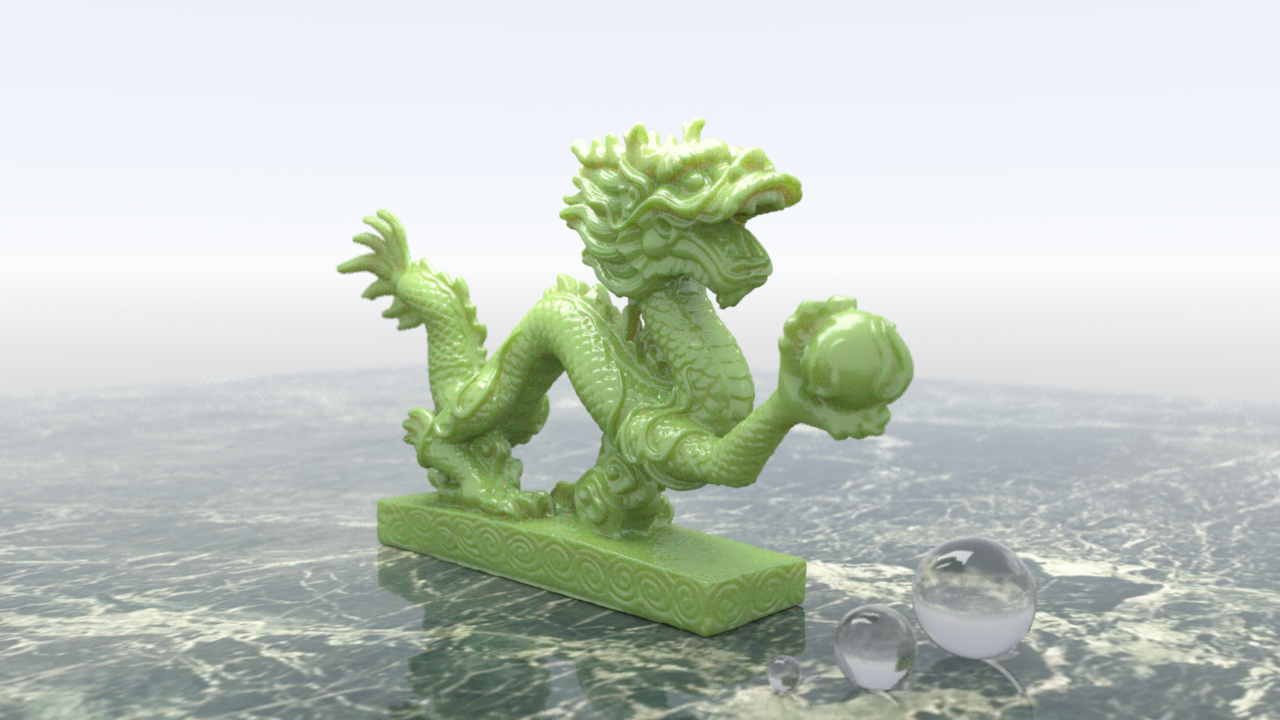
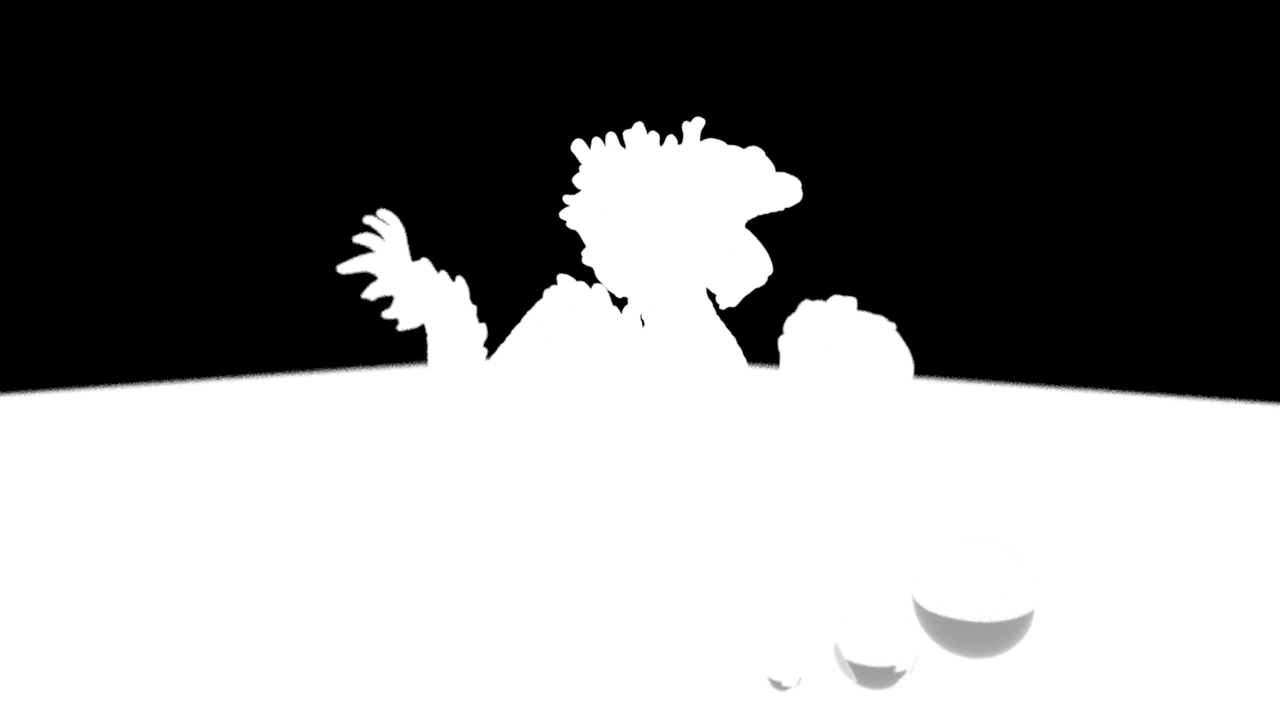


.png)
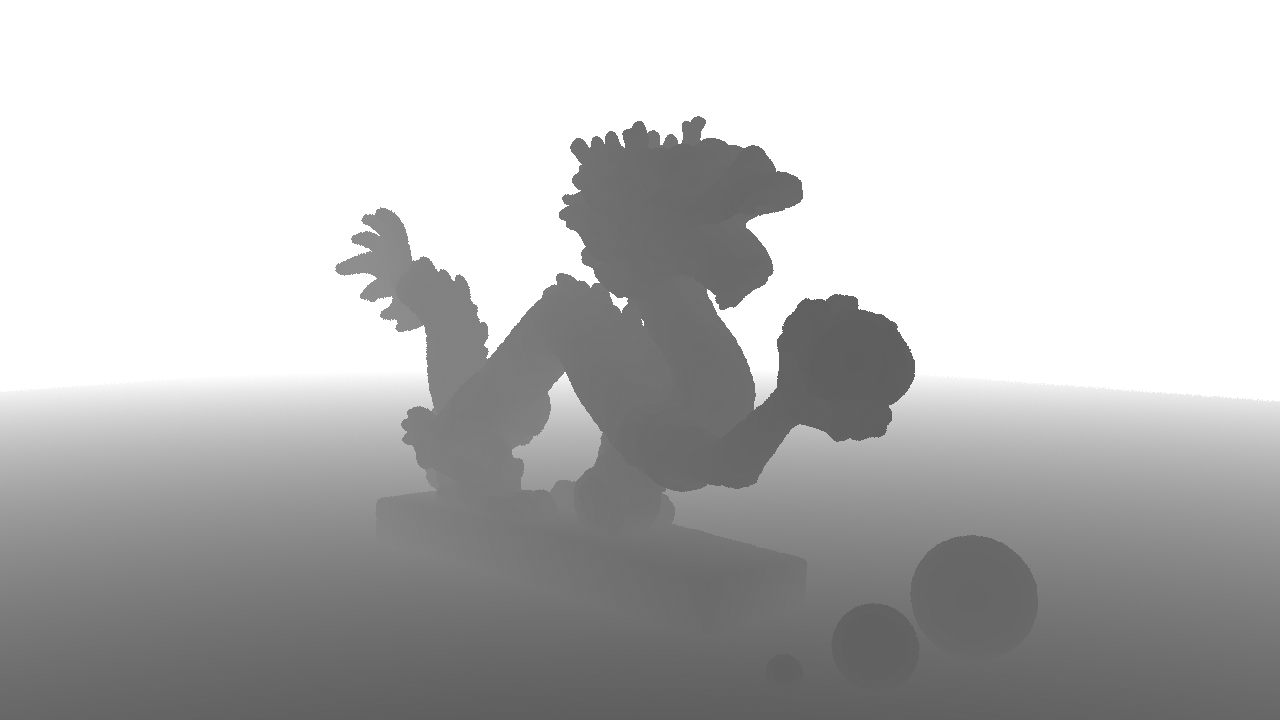
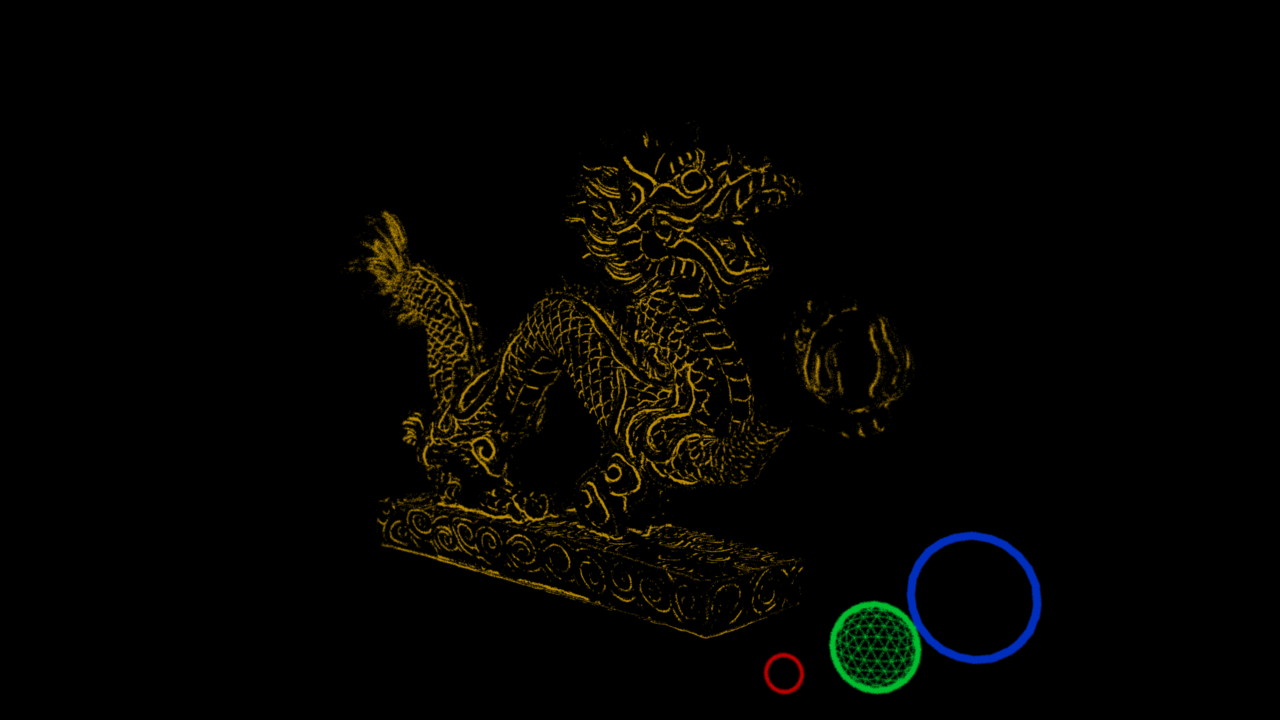
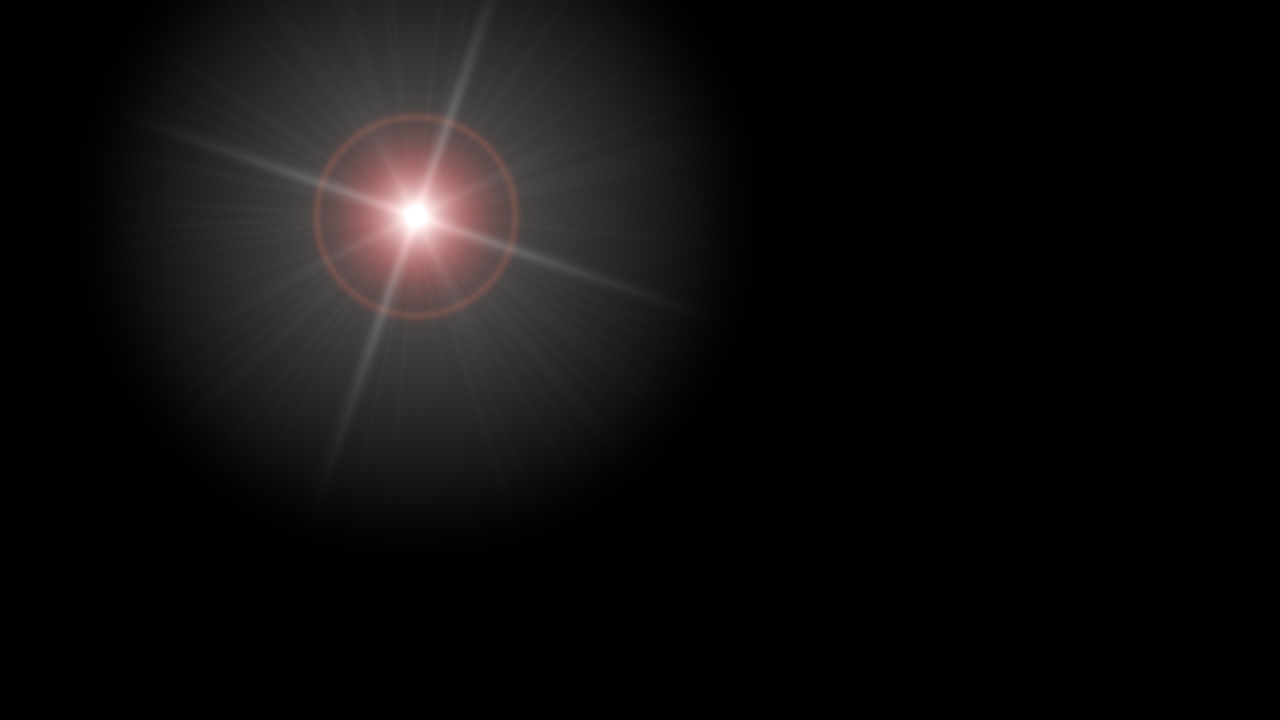
.png)


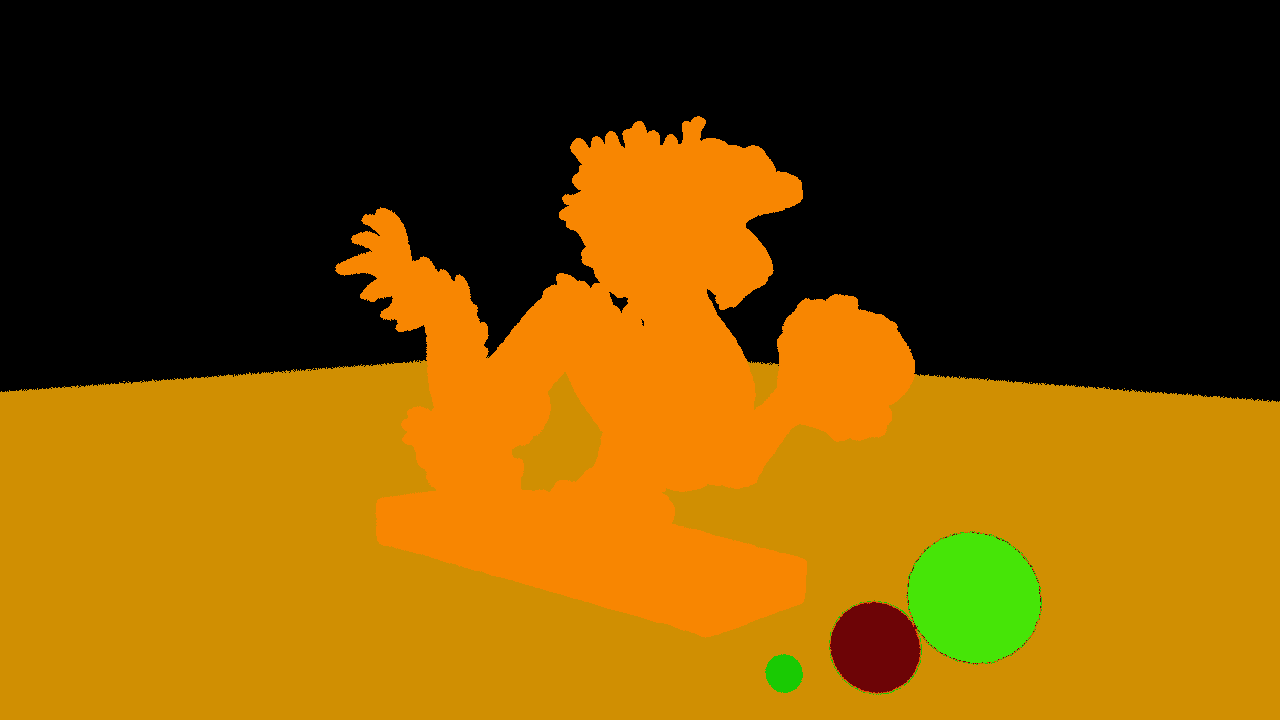

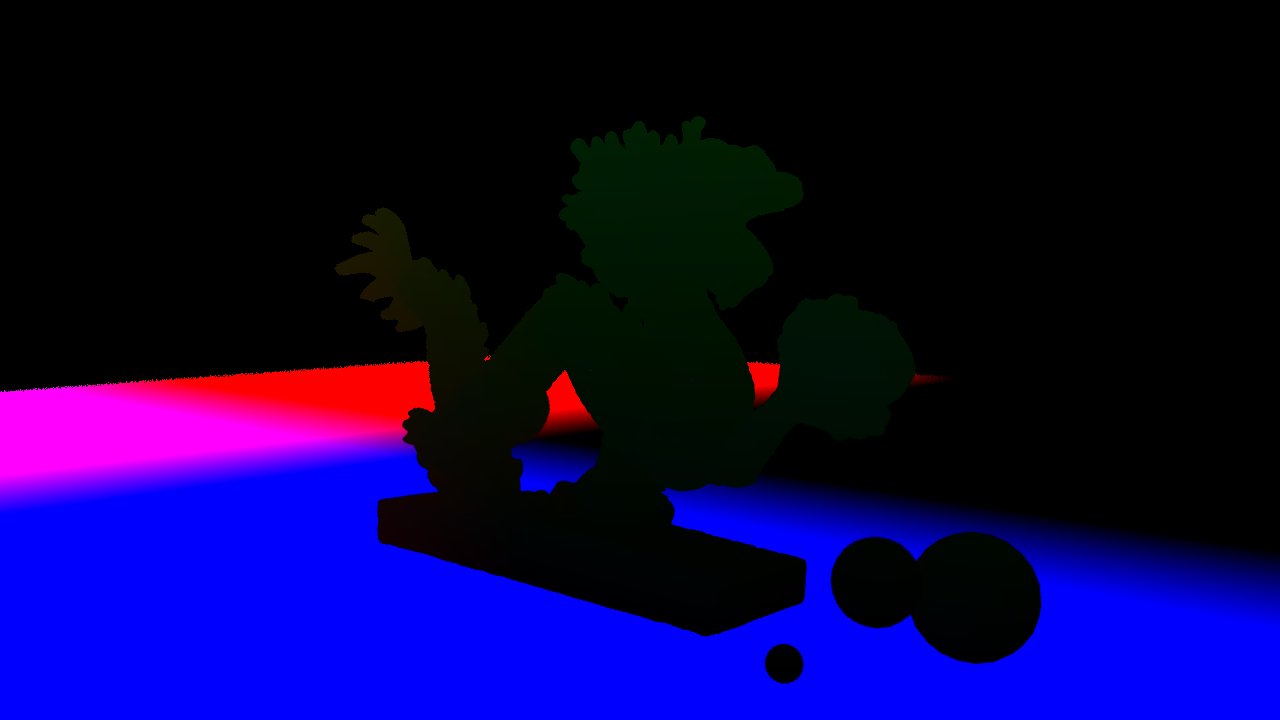
.png)
.png)
